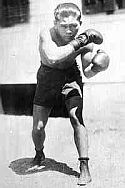
|
Philippines, 05 Jan 2026 |
Home >> News |
 |
||||
|
|
|
|
Who is Pancho Villa? (Third of a Series) By Eddie Alinea PhilBoxing.com Wed, 23 Jun 2010  Boxing?s Hall of Fame, established in 1954 by Nat Fleischer of Ring Magazine, in elevating Pancho Villa, cited the Filipino boxing hero?s overall record in the short seven-year he fought professionally: 99 bouts of which he won 22 by stoppages, 49 by decision. He lost five, drew four and had 19 no decision verdicts in places where boxing was illegal in the 20s. His enshrinement to the Hall in October 1961, 36 years after his death, was the greatest accolade ever given a Filipino fighter born of a poor family. He was forced by his family?s low standing to be a goat herd and a bootblack even before he reached his teens in Negros Occidental and to grow up in the slums of Palomar in Sta. Cruz district in Manila where he settled down after he stowed away. Whatever he made of himself later in his life came from the explosive power of his fists and a pair of strong legs. When he reached the pinnacle of his career, he plunged to make up for the boyhood days of hunger and hardships. He lived fast and went as fast. Christened Francisco Guilledo when he was born August 1, 1901, the Pancho Villa soon-to-be was taken by his parents, Rafael Guilledo, who worked as a vaquero (cowhand), and Maria Villaruel to the hacienda of Don Victoriano Rodriguez at La Carlota. He was only three months old then. Three months later, Rafael abandoned his family to join the United States navy, forcing the younger Guilledo, at the very tender age of his childhood, to help his mother earn a living by tending goats at the farm until, at age 11, he decided to leave the hacienda and try his luck in Iloilo along with boyhood friend known only as Manuel. Shining shoes was not the way the adventurous duo envisioned to improve their lot and help those they left at La Carlota so Francisco and Manuel decided to board an inter-island vessel bound for Manila where, as fate, would have, the future world flyweight champion would set up a permanent home at the Olympic Stadium (now the site of the Mapua Institute of Technology) along Doroteo Jose. Francisco enrolled at Meisic Elementary School on Reina Regente where he befriended up-and-coming boxer Elino Flores. The latter introduced him to his manager, Francisco Villa, an executive of the ice plant located at Aviles St. (now Laurel St.) near Malacanang Palace. The rest was history as Francisco joined Dencio Cabanela, who was to become the Philippine bantamweight, featherweight and lightweight champion, Flores brothers Francisco, Macario and Elino, Johnny Hill and later Paul Gin, who was later to become Manila Councilor Apolonio Gener in the Paquito Villa stable where he was to blossom into a world beater. That was 1917 and in 1918, Pacquito Villa adopted Francisco and changed his name to Pancho Villa after the Mexican revolutionary hero. Pancho fought 14 four-rounders in 1919, wining nine on points and four by Kos. He lost one. He fought 10 matches in 1920, emerging victor in eight times, two by Kos, six on points with the two others no-decisions. At age 20, Pancho had developed a tough body, flexible arms, strong legs and never weighed more than 114 pounds. Pancho fought 26 times at an average twice a month, including one over Terrible Pondong that earned for his the Philippine flyweight championshIp . A knockout victory over Australian flyweight champion George Mendies held on December 3, 1921 before an overflow crowd that included girlfriend-to-be Gliceria Concepcion and family catapulted Pancho to international status. Click here to view a list of other articles written by Eddie Alinea. |
|
|
PhilBoxing.com has been created to support every aspiring Filipino boxer and the Philippine boxing scene in general. Please send comments to feedback@philboxing.com |
PRIVATE POLICY | LEGAL DISCLAIMER
developed and maintained by dong secuya © 2026 philboxing.com. |